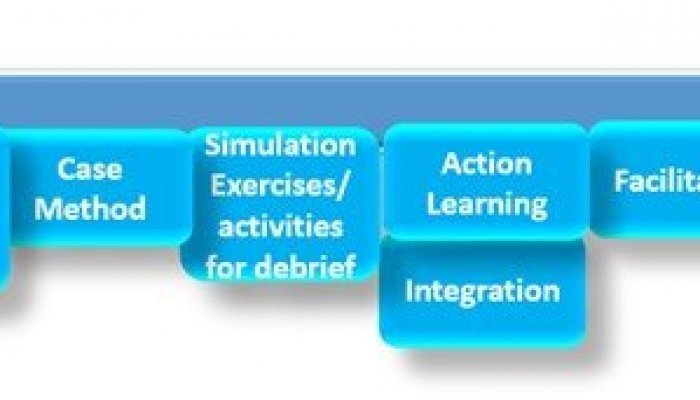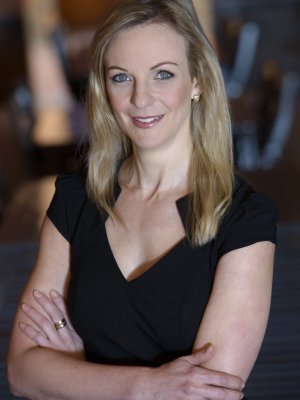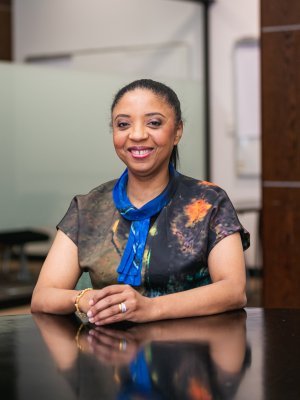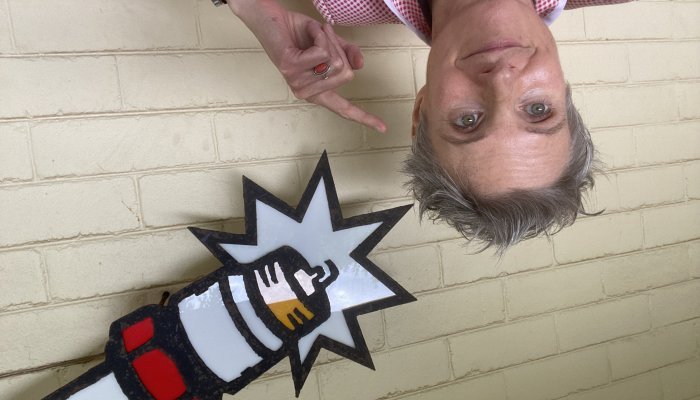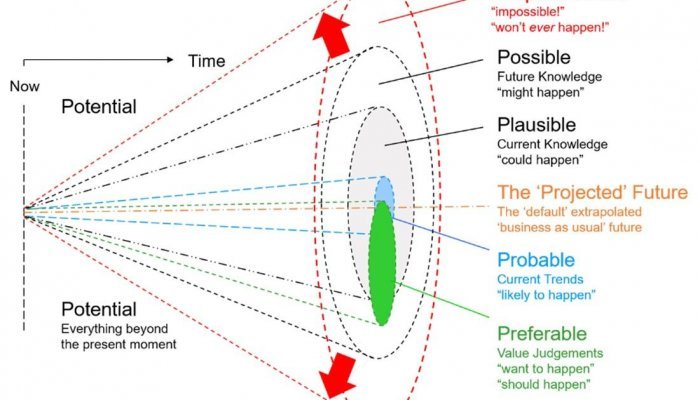Naturally we all think about the future, says leadership development designer Gillian Cross. This is why future preparedness isn’t just a discussion at leader level or as part of an organisational context: it’s a skill we all need to harness.
That said, adds Cross, “the skills you acquire with futures consciousness are absolutely necessary for leadership, and for leading yourself. It’s about thinking about your future and thinking about alternatives” for possible futures, from the "preposterous" to the "preferable", as depicted in the futures cone (Figure 1).
This approach helps to build a degree of resilience and the agility to pivot where necessary. These are critical capabilities in business, says Dr Roze Phillips, GIBS adjunct faculty and Cross’s fellow director at leadership development company Abundance At Work. “As ‘black swan’ events are becoming a regular occurrence, it is clear that change is the only constant and uncertainty the only certainty,” she says.
While we all benefit from being aware of future possibilities, it’s especially important for companies and countries. As Finland-based coach Paul Ylisassi says, “We need futures consciousness everywhere and every day in businesses: whenever we make choices or decisions, when we paint visions or create strategies, or when we set goals and targets for the future.”
What is futures consciousness?
Futures consciousness draws on human creativity to envisage (both cognitively and emotionally) a range of possible futures, which we can then begin to shape in current time. It’s not just about trends and scenario planning. Futures consciousness is about foresight and anticipating disruption, and doing that inclusively. According to Phillips, “Futures intelligence, which combines futures literacy with futures consciousness, gives us tools, techniques, methodologies, skillsets, mindsets, and heartsets to anticipate different alternative futures, imagine our preferred future and create the actions today that turn our preferred future into reality.”
For Cross, it’s about cultivating the mindsets needed to act on the future now. “Organisations that think about the future, and develop a contextual mindset for thinking about the future, are more adaptive,” she says. This, in turn, means they are better prepared to navigate the inevitable uncertainties that lie ahead.
How to develop that mindset requires knowledge and advanced understanding of how humans sense and respond to change. It also requires practical skills and the ability to apply them in such a way that thinking into the future forms part of your mindset and values, explains Alison Reid, head of personal and applied learning at GIBS.
How does it help my business?
For individuals, the advantages of futures consciousness range from developing agency, becoming more comfortable with multiple perspectives, and dealing with complexity and ambiguity. It’s about being able to “hold more than one future in mind and the ability to imagine and think about scenarios,” says Reid.
Cross adds that futures consciousness “fosters an awareness that while the future is uncertain, it can be created to a degree by your actions and every day we shape that future through our actions as a business or as a leadership team”.
Since a futures orientation flourishes with diversity of thought, mindsets and worldviews, it also resonates well with a team approach and “raises the question of how you intentionally bring representation into the room from a company perspective, to ensure that you are more collectively responsive and adaptive to change”, says Cross.
How are organisations developing their futures muscle?
Given these advantages, more examples are emerging of businesses taking an intentional view of the future. Cross says some clients have set up “war rooms” in which they simulate crises before they happen. “Those can be useful because when there is no crisis people tend to forget about the future and think it is one straight line – a mere extrapolation of the past,” she notes. Phillips adds, however, that “creative thinking cannot thrive in an atmosphere of crisis and fear,” so it is equally important to think about the future when there is no crisis.
Another way to hone the skill is to make use of experiential futures games to help participants explore alternatives and develop their foresight thinking in a fun, collaborative and inclusive way.
These include the Polak Game, the Sarkar Game, the 2x2 Scenario Exploration and the Future Now Game developed by Abundance at Work.
Each of these games is participatory and team-based, and is able to move participants from a two- to five-year time horizon to a more distant future. “The further out they move in time, the more participants start practising this as a creative process,” explains Cross. “The more they let go, the more they start entertaining new ways of thinking. They start diverging, and that changes the narrative. It’s a way to practise changing the narrative beyond just your strategic horizon, and it helps them let go of the politics of the present.”
Similar thinking is also taking place in countries such as Sweden, Finland and Wales, which have introduced either permanent or temporary roles for future-focused lawmakers. As Phillips explains: “We have to stop discounting the interests of future generations, in fact, we have to bring future generations into the room and into our day-to-day decision-making. A recommendation I make to executive leadership teams and boards is to leave a chair at the boardroom table and that chair represents future generations. It’s a visible reminder of the voice of the future generations, especially when you are making strategic decisions that affect both the future of the company and its stakeholders.”
Reid also recommends organisations invest in developing people’s futures consciousness at a personal level, something she says business schools have neglected in the past but which will become increasingly important as a leadership competency in the future. After all, agrees Phillips, “The way you see the future is determined to a large extent by the way you see yourself in the future. Both your possible actions and your unfolding professional and personal identity evolve as you continuously expand your perspectives.”
Embedding futures thinking into your leadership style
Fortunately, says Reid, advances in neuroscience and psychology offer some clues as to how best we can mould our minds to accept – and even embrace – change, by appreciating the role dilemma reconciliation has on our choices. The concept of dilemma reconciliation, which lies at the core of organisational theorist Fons Trompenaars’ work, is becoming increasingly important in today’s world because it shines a light on the traditionally binary nature of decision-making.
Reid explains, “Dilemma reconciliation highlights that conventional means of making decisions don’t work as well anymore. Positioning options or scenarios as right versus wrong, or findings ourselves pulled in opposite directions, misses the opportunities present in a ‘third way.”
Futures thinking is about looking for (and working through) a third way. “When you’re talking about futures, it doesn’t work to use only past predictions and rationalisations, especially if you find yourself stuck,” says Reid. “For instance, if you’re stuck in a profit-and-loss mindset and can’t reconcile how that allows you to honour a sustainable business approach. You can’t easily reconcile those positions by considering only the one or the other, you have to create new ways to combine both.”
Developing that skill is not only possible, it is critical for today’s leaders who should embrace knowledge as well as subjective learning practices to develop those skills and mindsets, from coaching and case study immersions, to simulations and facilitations (Figure 2).
In the past, educators and leaders have been comfortable in the “know” sphere of learning, but for individuals to learn sustainably and to change continuously it is now necessary to merge “knowing” with “doing” and “being”, says Reid.
- Knowing – Reid explains that knowing can be both external and internal. Externally, “you need to acquire knowledge from an expert, and consult case studies to develop perspectives and focus your mind”. Knowing can also be learning about your strengths and habits of thinking and understanding how this looks in your specific context. Then, internally, a commitment to action and accountability is key.
- Doing – When you apply yourself through learning practices, such as facilitation or coaching, you help to shift from instructional learning to application, shared action and decision-making, says Reid. The latter is particularly important given the importance of harnessing diversity and collaboration.
- Being – This is the level of values, drivers, identity and mindset. Many learning practices, from dialogue circles to executive coaching, seek to undo the hard-wired human resistance to change. They also expose biases and resistance that lock a leader into thinking they are dealing in binary options; this helps build a degree of comfort with the many future possibilities on the table.
The shift from “knowing”, through “doing” to “being” is the ultimate goal for developing effective and inclusive future leadership. For Reid, the distinction is clear: “It’s not about learning futures consciousness, it’s about becoming increasingly futures conscious.”
Stepping stones towards futures fitness
- For leaders looking to improve their understanding of alternative futures and worldviews and how to use future readiness to shape organisational strategy, the GIBS Future-Ready Executive course runs over two days at the beginning of November 2023. Senior professionals, executives from all spheres, entrepreneurs, strategic leads and innovation heads stand to benefit. The executive course is a perfect accompaniment to the GIBS Futures Intelligence online masterclass, which runs until September this year.
- Later this year a White Paper by the GIBS PAL Centre will be available offering more insights into how futures consciousness can be harnessed to enhance professional skills and corporate impact. The White Paper asks the reader to imagine a world of big-picture thinkers who can envisage, lead and connect with alternative tomorrows.
KEY TAKEAWAYS
- Leading yourself, let alone others, into an uncertain future is challenging, Which is why a futures-orientated mindset is so crucial.
- Applying futures consciousness to business decision-making helps leaders set goals and targets that build sustainable organisations and lasting legacies.
- Futures thinking is about looking for a third way, rather than getting bogged down in binary choices.
- It is possible to develop the skills associated with futures consciousness by embracing new learning practices, from coaching to case study immersions, simulation and facilitations.
- Given the human tendency to resist change, knowledge and knowing is not enough. To step confidently into the future, leaders needs to be at one with futures thinking.



